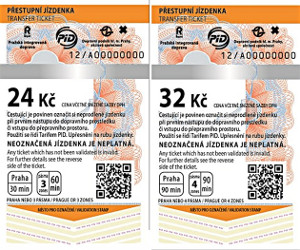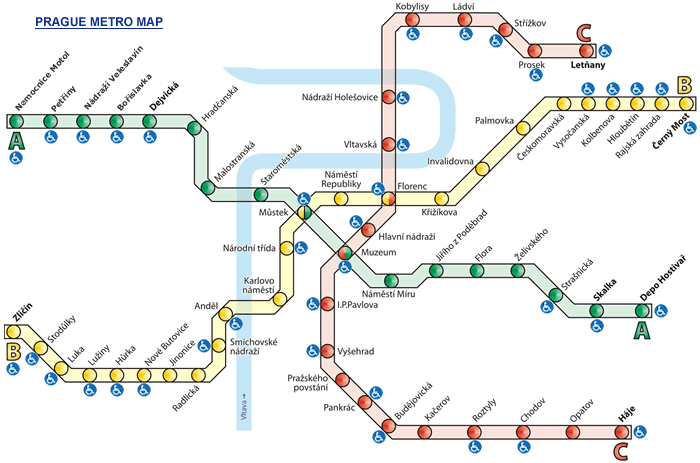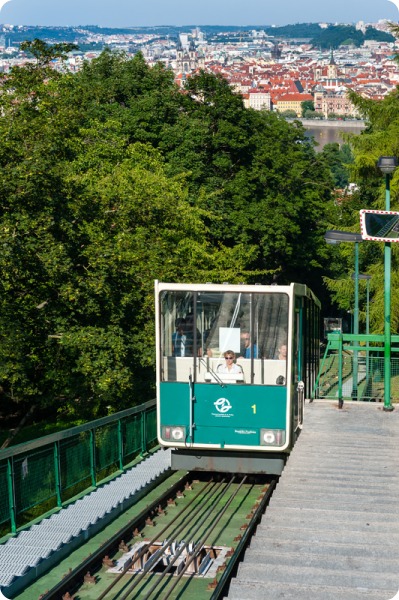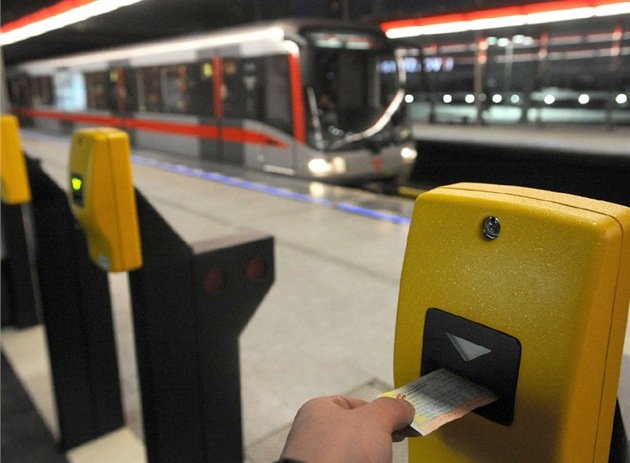How to navigate the Prague Public Transport system and get around in the city
Hi there Steemians! I am back with my series about Prague. one of the most beautiful cities in the entire world! Today we are going to talk about the public transport in Prague to help you orientate yourself about what types of transportation are available, how it works and how much the tickets cost, so let's get started!
Prague and the Czech Republic in general have one of the most efficient public transport networks in Europe. Wherever you are, whether in the city center or on the outskirts in the suburbs of the capital, you will be able to comfortably (and timely) get anywhere else in the city.
The public transport in Prague is managed by the company DPP (Dopravní podnik hlavního města Prahy) and it's spread over a network including subways and trams and buses running day and night. This, together with regional trains and buses, forms the so-called Integrated Transport of Prague, or PID (Pražská integrovaná doprava).
- Tickets:
Tickets are valid for the entire public transport network and can be purchased at any tobacco shop, in the thousands of vending machines scattered around the city, inside the metro stations and directly from tram and bus drivers (with a small surcharge on the ticket price).
The cost for a 90-minute trip (transfers included) is 32 crowns (more or less 1.30 euros), while the ticket for short journeys, valid for 30 minutes, costs 24 crowns (just under 1 euro, with transfers included as well).
If you are visiting the city for a longer time, there are also daily tickets valid for 24 hours for 110 crowns and 3-day mini-subscriptions (72 hours) for 310 crowns.
Also, children up to 6 years of age and seniors over 75 enjoy FREE rides, on the condition that they present a proof of identity if asked to.
Let's have a look, one by one, at the ways to move around in the Czech city:
- The Prague metro:
It is spread over 3 lines, A (green), B (yellow) and C (red). It comprises 61 stations that touch all the most important places in the city, both in the historical center and in the residential / working and peripheral areas. The D (blue) line is in the planning stage, with the start of work scheduled for 2019-2020.
The metro runs from 5 am to around 00.20, 7 days a week, with waiting times ranging from about 2 minutes during rush hours to 10 minutes in the evening. The network exchange stations are the Můstek station (yellow and green), Muzeum (red and green) and Florenc (yellow and red).
Recently, 3 new green line stations have been opened to facilitate the transfer from the airport to the city center. The Line A, which previously ended at the Dejvická station, was then extended with the stations of Bořislavka, Nádraží Veleslavín (the station from which to take the bus 119 to the airport) and Nemocnice Motol.
- Prague trams:
Easily recognizable thanks to their red color, it is the second most used transport in the Czech capital. The tram network of Prague is truly capillary and also allows you to enjoy the beauties of the city during the journey. The most important is the tram number 22, the tourist tram that passes along all the landmarks of the city (Plese note: it is also the one with the most concentration of pickpockets. Be careful!).
The tram operating hours are from 4:30 in the morning to around 00.10. The frequency is about 8 minutes during daytime on weekdays (8 to 15 minutes during holidays) and 20 minutes for night time ones.
The night tram exchange point is located in Lazarská Street and the numbers range from 91 to 98. Each stop is provided with a table with destinations, stops and transit times.
- Prague buses:
Together with the trams, they are the night transport par excellence. Prague buses run from 5-8 minutes during peak hours on weekdays to 10-20 minutes during the evening hours. On weekends they pass every 10-30 minutes.
As for night buses, the numbers range from 901 to 913. Buses 901, 902, 904, 905, 908 and 911 pass every 20 minutes and the 903, 906, 909, 910, 912 and 913 once per hour. The only exception is the 907 bus which has a frequency of 90 minutes. The 901 bus is also the one used to go to / from the airport.
- The Petřín funicular:
If you have tired legs after a day spent visiting the monuments of Prague and you want to relax a bit, you can just take the funicular to the hill of Petřín and enjoy the breathtaking view. The funicular is in service from 9am to 23:30 and departs every 15 minutes. Before arriving at Petřín it stops at Nebozízek station. The tickets you can use for this are the same as the metro, tram and bus.
For more information on Prague transport, we recommend visiting www.dpp.cz (in English as well), where you can plan your travels using the search engine available by clicking on Transport around Prague > Journey Planner.
ALWAYS remember to validate the ticket in the ticket machines placed at the entrance of the metro stations and in the buses / trams: the controllers, in fact, are often incognito (for the control they will show you a sort of seal of the DPP) and not at all condescending, especially with tourists. If you were caught without a ticket, the fine would be 800 crowns (about 27 euros) to be paid immediately on the spot. Tourists are advised ...
I am sure you will be absolutely impressed by the punctuality and efficiency of public transport in Prague. Feel free to comment below if you are curious and want more information on the Golden City.
Enjoy your visit and Cheers from Prague!




@klaus85 nice article! Great for travellers for sure. I had been to Paris and Geneva via Eurorail before...and had taken the very convenient public transit there as well. Prague and Czech Republic are places I would like to visit one day, cool explanation seems like a very easy system to travel around for tourism and sightseeing!
To carry on from your previous responses, I also had a mini parrot lol...harp sounds from the harmonica can be mesmerizing and beautiful... what wonderful musical instrument you have chosen to learn to play! I tried children's version of harmonica in my middle school years...not good at it LOL
Thanks for the answer @miss.kat! Let me know if you plan on visiting Prague and need advice, I am glad to help and I am sure that your visit here will be an unforgettable experience :)
And you are right, the city is VERY EASY to navigate. t is a big city but the most important things are very close to each other... it has this kind of village feeling that makes it perfect to be visited with a relaxed pace.
@klaus85 thanks for your kind advices! Yeah I'm not thinking anytime this year or the next but will do, definitely in planning within next few years. Will be knocking at your post asking for travel advices lol! Already have plans to travel to Asia next year, and this year it's playtime in my own country Canada...so many places to explore lol!!!
Sure, please feel free to knock as much as you want ;)
@klaus85 will do hahahha!
So where in Asia are you thinking on going?
@klaus85 no set plans yet but have thought about pitstop at Hong Kong, then to Japan, Korea, possibly Taiwan...maybe to Malaysia/Singapore as well
That's sounds like a hell of a trip :) a Ukrainian friend of mine is on love with Asia and goes there almost every year. He's currently in HK, told me the city is beautiful but really expensive, totally the contrary of Taiwan (where he claims he had the best sushi of his life ;))
Cheers from Prague ;)
@klaus85